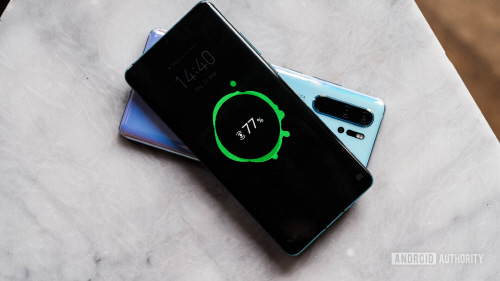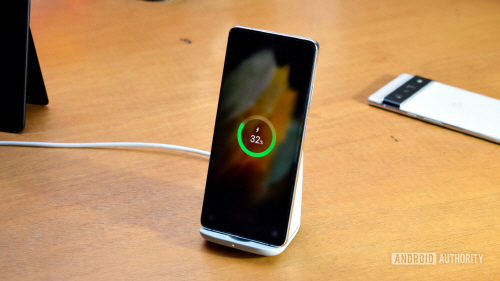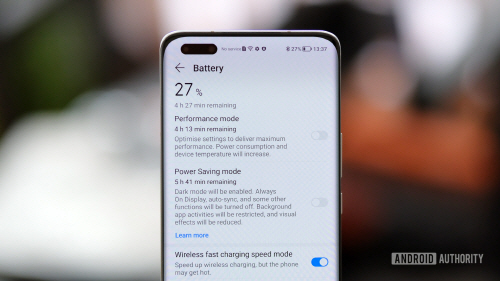자료실
[해외칼럼] 무선 충전이 스마트폰 배터리 수명에 미치는 영향과 배터리를 오래 사용하기 위한 팁
- 작성일2022/10/13 16:45
- 조회 328
[번역요약]
요즘 대부분의 중급 이상 스마트폰은 무선 충전 기능을 가지고 있어, 하루 종일 편하게 배터리를 충전할 수 있습니다.
이런 편리한 기능이 스마트폰 배터리 상태에 영향을 미치는지 걱정해야 하는지 이 글에서 알아보려 합니다.
무선 충전이 배터리 수명에 좋은가요 나쁜가요?
배터리는 충전할 때 발생하는 열로 어떤 식으로 충전하던 마모되기 마련입니다. 발열 같은 요인은 마모를 가속화하여 장기적으로 배터리 성능을 감소시킬 수 있습니다.
충전하는 동안 벽면 콘센트에서 흐르는 모든 전력이 스마트폰 배터리에 도달하지 않습니다. 그러한 전력은 열로 변환되어 배터리 성능에 악영향을 끼칠 수 있습니다.
이런 문제점을 보완하고자 일부 무선 충전기는 온도를 제어하기 위해 냉각 팬을 포함하여 제조합니다.
냉각 팬이 없는 충전기의 경우 보통 5W 정도의 낮은 전력으로 제한되며, 낮은 와트에서는 열이 거의 발생하지 않으므로 스마트폰도 과열되지 않습니다.
모든 점을 고려해보면, 무선 충전이 배터리 상태에 영향을 미치는 것에 대해 크게 걱정할 필요가 없습니다.
무선 충전으로 인한 발열이 있더라도, 최신 배터리 관리 시스템은 충전기와 통신하여 전력 출력을 줄이거나 충전을 완전히 중지할 수 있습니다.
이런 배터리 보호 기능은 유선 충전과 동일합니다.
스마트폰 배터리를 오래 사용하기 위한 팁
배터리를 자주 충전한다.
연구에 따르면 스마트폰 배터리는 최대 용량의 20~80%를 유지할 때 가장 오래 지속됩니다.
즉, 가능한 한 오랫동안 배터리 상태를 좋게 유지하려면 100%까지 충전하지 않아야 합니다.
밤새 충전하는 것보다 틈틈이 짧은 시간 동안 여러 번 충전하는 것이 좋습니다.
이러한 이유로 삼성은 충전을 85%로 제한하는 기능을 제공하기도 합니다.
마지막으로 배터리가 있는 전자 장치를 오랫동안 사용하지 않을 예정이라면 완충 된 상태로 두지 않는 것이 좋습니다.
기기를 시원하게 유지한다.
스마트폰을 극도로 뜨거운 곳이나 차가운 곳에 두면 배터리 성능이 급격히 저하될 수 있습니다.
휴대폰을 햇빛에 노출시키거나 급속 충전하는 동안 베개 아래에 두지 않는 것이 좋습니다.
Apple 은 95° F, 35°C보다 높은 온도를 피할 것을 권장하며, 이상적인 범위는 62° ~ 72° F, 16° ~ 22°C보다 훨씬 낮습니다.
되도록이면 급속 충전을 사용하지 않는다.
자체 테스트에 따르면, 각각 스마트폰마다 차이는 있지만, 급속 충전은 더 많은 전력을 공급하기 때문에 열 출력이 증가하는 결과가 나타났습니다.
충전에 여유 시간이 충분히 있다면 열이 많이 발생하지 않는 10W, 18W 정도의 고속 충전을 사용하는 것이 좋습니다.
만약 위의 방법이 모두 실패한다면, 스마트폰 배터리를 교체하는 것이 새로운 휴대폰으로 교체하는 것보다 저렴하게 사용할 수 있을 것입니다.
기존 휴대폰을 5년 이상 사용할 계획이라면, 3년 정도 사용 후 배터리를 교체하는 것이 훨씬 효과적입니다.
[칼럼원문] 작성자 : Calvin Wankhede, 출처 : https://www.androidauthority.com/wireless-charging-battery-health-3198991/
Is wireless charging bad for smartphone battery health?

Most premium and upper mid-range smartphones ship with wireless charging capabilities these days, allowing you to keep your battery topped up throughout the day.
As convenient as this feature might be, however, should you worry about wireless charging affecting your smartphone’s battery’s health? Let’s break it down.
QUICK ANSWER
All things being equal, wireless charging isn’t inherently more harmful to your device or its battery than wired charging.
That said, charging your device wirelessly generates more heat, which is bad for battery longevity.
Wireless chargers with a built-in cooling fan help alleviate this issue.
Is Wireless Charging Good or Bad for Battery Health?

First off, charging a battery in any way does wear it out to some extent. External factors like heat can accelerate this wear, reducing the battery’s capacity in the long term.
And that’s exactly where wireless charging performs worse than conventional wired charging.
While charging, not all the power pulled from a wall outlet ends up reaching your device’s battery.
It’s widely understood that the efficiency of wireless charging is around 80%. That figure could drop as low as 50% in the real world,
depending on how well you align the coils in the charger and smartphone.
Needless to say, wired charging is far more efficient since a copper wire conducts electricity extremely well and there’s no physical gap.
Coming back to wireless charging, the energy that doesn’t make it to your device gets converted into heat.
And as we highlighted already, continued exposure to heat will degrade your device’s battery.
Moreover, if you use a thick case with your smartphone, it could prevent it from cooling down quickly enough.
Wireless charging has the potential to generate excess heat, which can negatively impact battery health.
You’ll find that some wireless charging pads include a cooling fan to keep temperatures under control.
The vast majority of public and in-car wireless chargers don’t include one, but these are typically restricted to lower power outputs like 5W.
At such low wattages, there’s next to no heat generated so your device won’t overheat either.
All things considered, you don’t have to worry much about wireless charging affecting battery health.
Even if your phone does somehow get dangerously hot, modern battery management systems can communicate with the charger to either reduce power output or stop charging altogether.
After all, the same protections exist for wired charging too.

Top up your battery frequently
Studies have proven that smartphone batteries last the longest when they’re kept between 20 and 80% of their maximum capacity.
In other words, if you want to conserve battery health for as many years as possible, don’t charge to 100% regularly.
Instead of charging your phone overnight, you could top up the battery in short bursts throughout the day.
Samsung and a handful of other manufacturers even offer the ability to limit charging to 85% for this very reason.
Finally, if you won’t be using a battery-powered electronic device for a few weeks, don’t leave it fully charged for the same reason.
While ambient temperature isn’t always in your control, exposing your smartphone to extreme heat (or even cold) can lead to rapid battery degradation.
Some scenarios that put undue stress on the battery include leaving your phone exposed to the sun or placing it under a pillow while fast charging.
Apple recommends avoiding temperatures higher than 95° F or 35° C and states that the ideal range is much lower than that at 62° to 72° F or 16° to 22° C.
While the impact of fast charging on battery health is not as well known,
our own testing has shown that pushing more power increases heat output. The amount of heat generated varies depending on the smartphone in question, though, as no two technologies work the same.
If you have plenty of time to spare, consider using a 10W or 18W fast charging brick as these don’t generate nearly as much heat.
You don’t always need 65W or 150W charging, after all. You can also step all the way down to 5W if you don’t care about charging time at all.
The same applies to fast wireless charging, as discussed above.
If all else fails, don’t forget that it’s possible to get your smartphone battery replaced.
It can be a hassle if you don’t live near a repair center but it’s a lot cheaper than a brand new smartphone. Most brands charge less than $100 including taxes and labor.
If you plan on using your device for five years or longer, it’s probably worth replacing the battery around the three-year mark.







